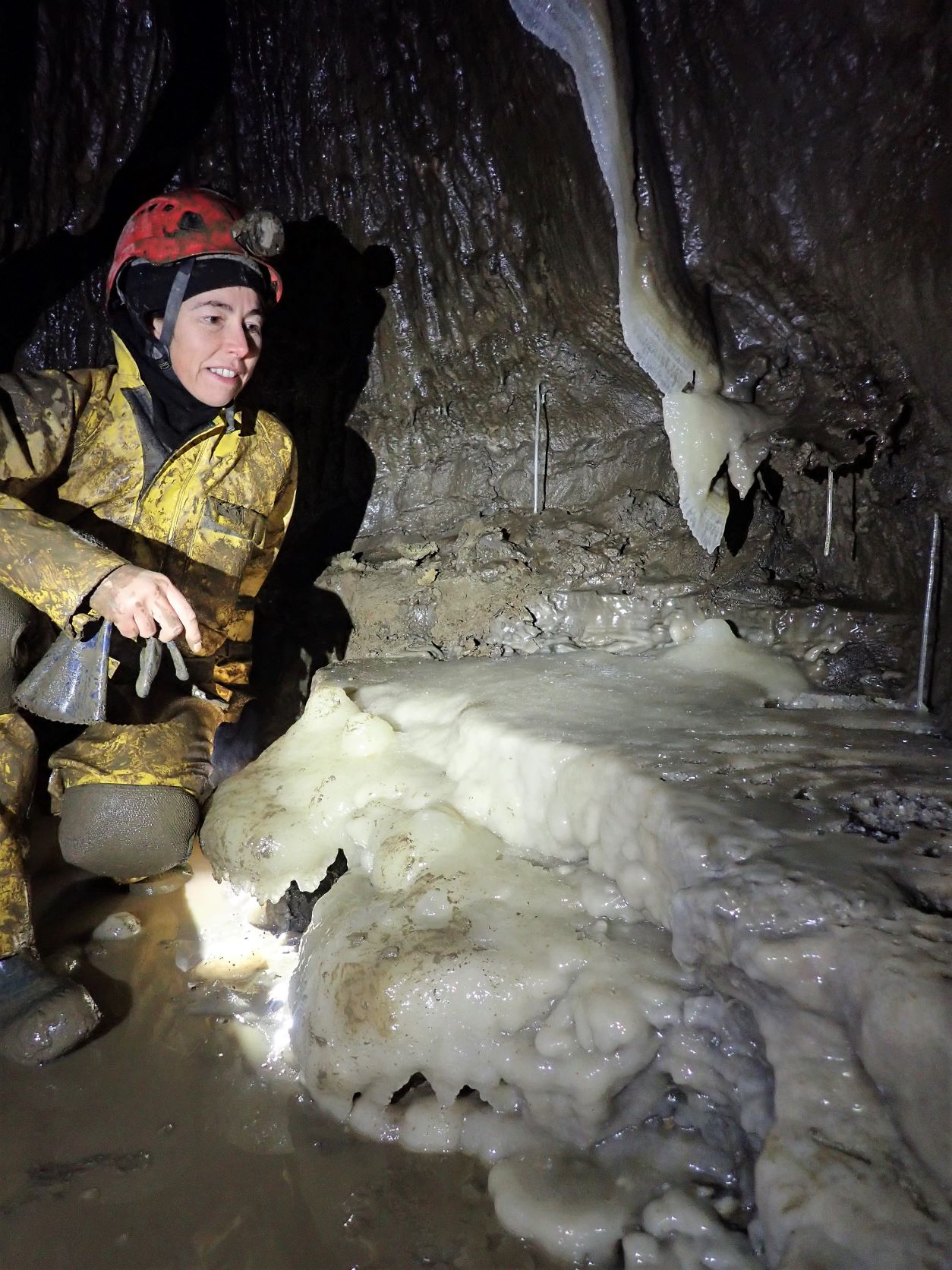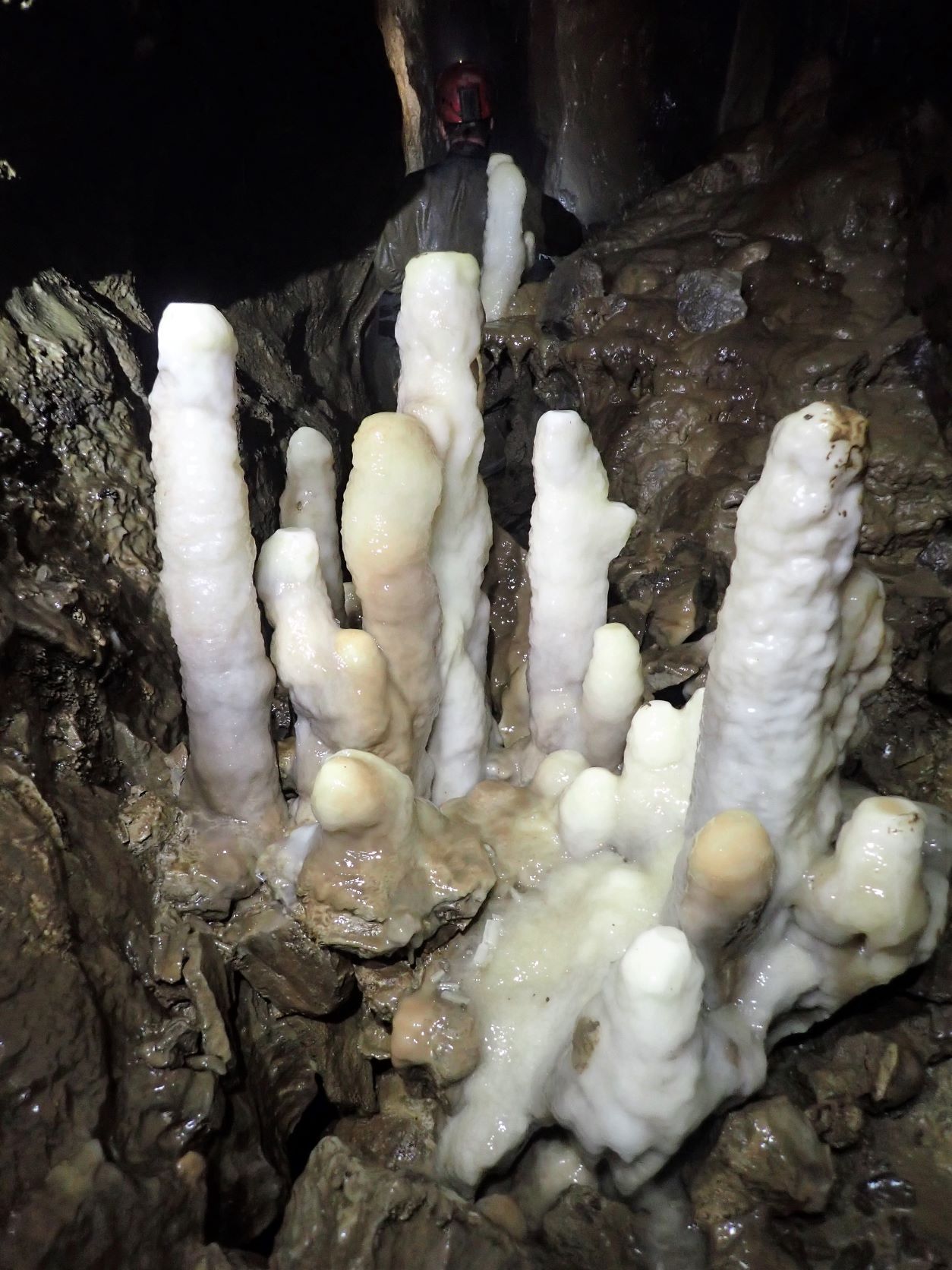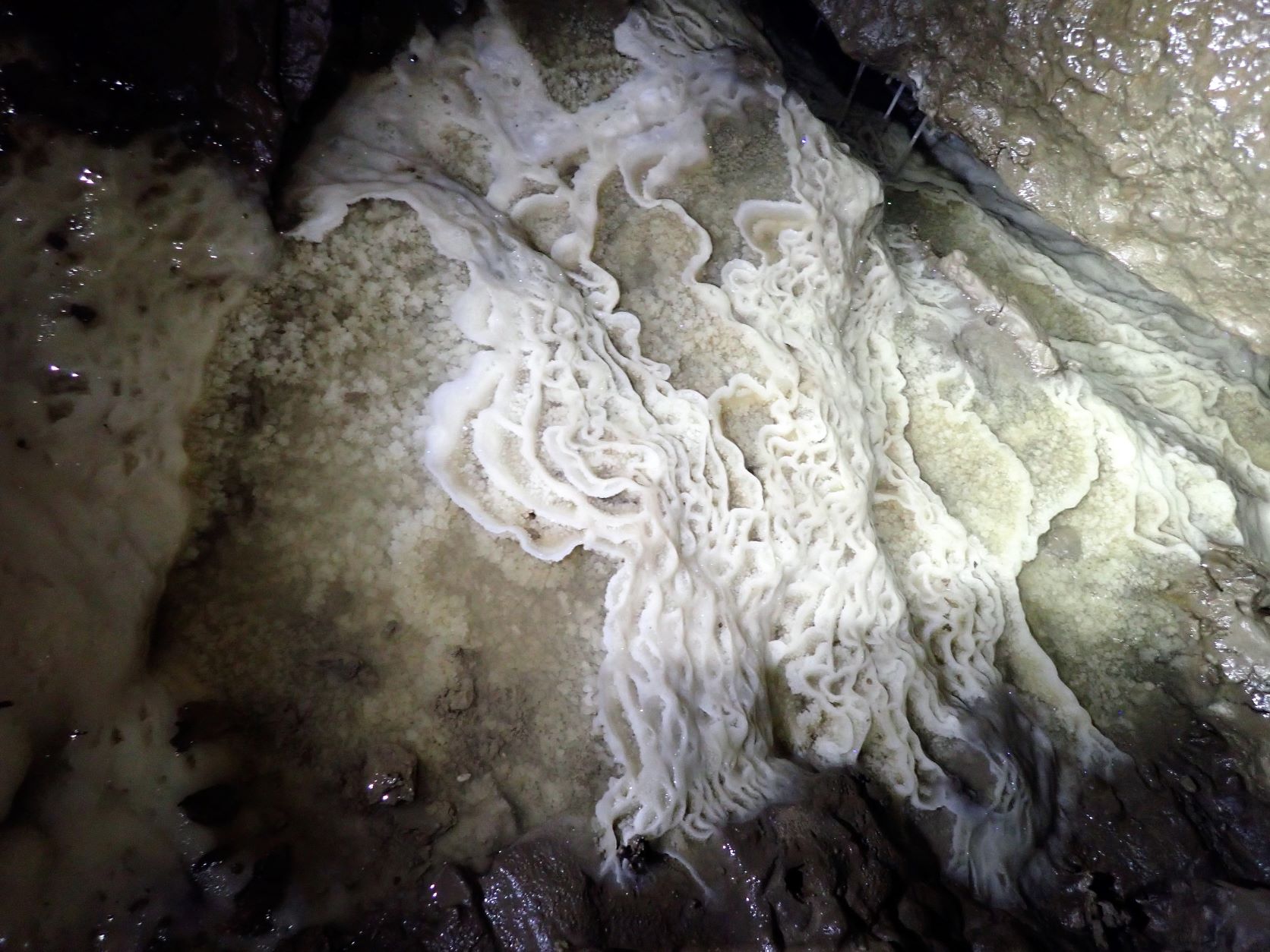Split from the story in another thread - What would you do?
Here is the conservation dilemma. In a newly discovered cave there's a well decorated passage less than a metre wide. The higher formations are fine but those on the floor do not stand a chance. All explorers, surveyors, photographers and visitors are already muddy by the time they get to this point and there are no opportunities to get clean. There are swamps of liquid mud between formations and the passage is on the main route to further and bigger cave. The Apostles (see photo below) are taped now with a spray gun cleaning station nearby but there is no chance of taping or avoiding some of the other pretties. The floor formations were unavoidably muddied from the very first trip and are lost forever. There are lots of rich formations in the cave many which can be and are protected.
Is it ok to sacrifice some formations in the name of cave exploration and sport? Should all formations be preserved? Where is the balance?
Here are some of the more vulnerable sort of locations.



Here is the conservation dilemma. In a newly discovered cave there's a well decorated passage less than a metre wide. The higher formations are fine but those on the floor do not stand a chance. All explorers, surveyors, photographers and visitors are already muddy by the time they get to this point and there are no opportunities to get clean. There are swamps of liquid mud between formations and the passage is on the main route to further and bigger cave. The Apostles (see photo below) are taped now with a spray gun cleaning station nearby but there is no chance of taping or avoiding some of the other pretties. The floor formations were unavoidably muddied from the very first trip and are lost forever. There are lots of rich formations in the cave many which can be and are protected.
Is it ok to sacrifice some formations in the name of cave exploration and sport? Should all formations be preserved? Where is the balance?
Here are some of the more vulnerable sort of locations.






